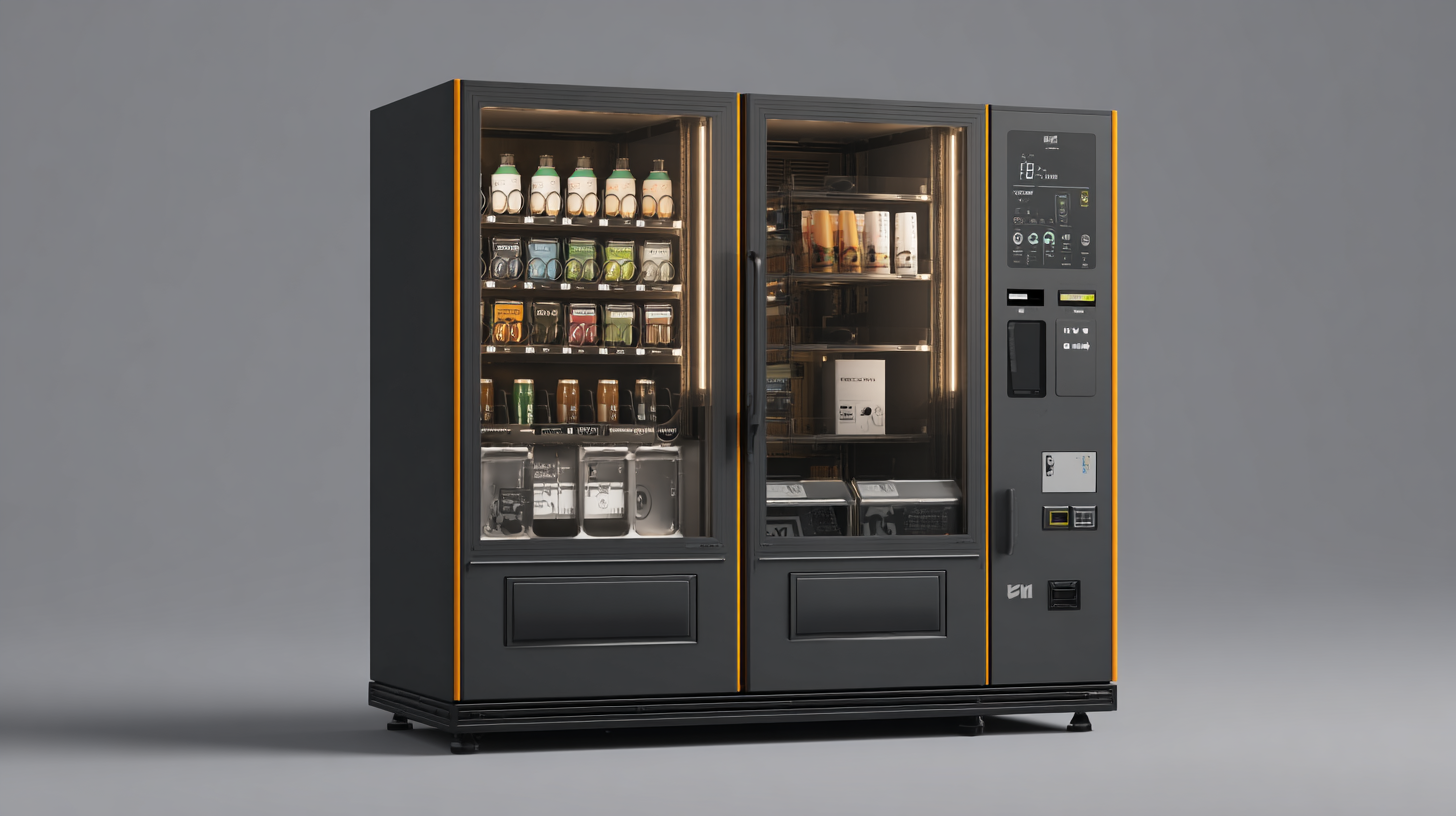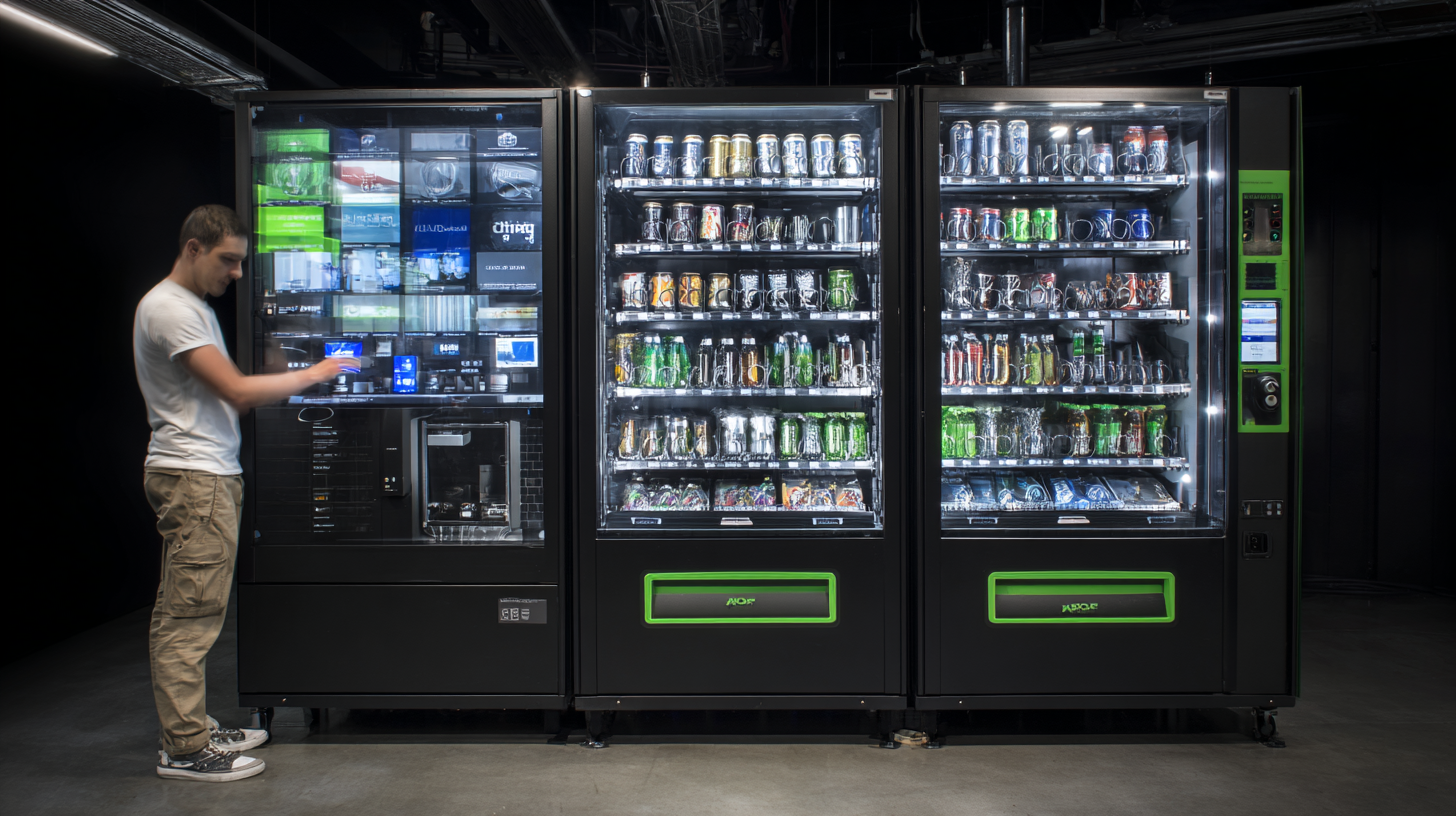Exploring the Future of Vending Equipment in Automated Retail Solutions
As the landscape of retail continues to evolve, the role of vending equipment within automated retail solutions is becoming increasingly vital. According to a report by Allied Market Research, the global vending machine market is projected to reach $30.4 billion by 2027, growing at a CAGR of 9.7% from 2020 to 2027. This growth is driven by the rising demand for contactless transactions and the integration of advanced technologies such as IoT and AI, which enhance the consumer experience and operational efficiency. Moreover, research from Euromonitor International indicates that nearly 60% of consumers are now open to using automated retail solutions, underscoring the necessity for businesses to leverage innovative vending equipment that meets evolving consumer preferences. As we explore the future of vending equipment in automated retail, it is clear that adaptability and technological integration will be crucial in capturing the attention of a tech-savvy consumer base.

Understanding the Evolution of Vending Machines in Automated Retail
The evolution of vending machines in automated retail has been remarkable, reflecting advancements in technology and changing consumer preferences. According to a report by MarketsandMarkets, the global automated retail market is projected to reach $8.05 billion by 2025, growing at a CAGR of 12.5%. This growth is driven by innovations such as cashless payment options, touchscreen interfaces, and inventory management systems that utilize IoT technology. These enhancements not only improve customer experience but also streamline operations for businesses.
Moreover, the integration of artificial intelligence into vending machines is transforming how retailers engage with consumers. AI-powered machines can analyze purchasing patterns and adjust their offerings accordingly, promoting personalized experiences. A study by Grand View Research reported that the smart vending machine market size reached $2.93 billion in 2020 and is anticipated to expand at a compound annual growth rate (CAGR) of 12.8% from 2021 to 2028. This trend underscores the shift towards more intelligent retail solutions that not only cater to consumer demand but also optimize inventory and reduce waste.
Trends in Vending Machine Revenue by Year
Key Technologies Driving Change in Vending Equipment
The future of vending equipment in automated retail solutions is being shaped by innovative technologies that enhance user experience and operational efficiency. Key advancements such as cashless payment systems, AI-driven inventory management, and smart vending machines are revolutionizing how consumers interact with vending units. By integrating these technologies, vending operators can offer a more personalized shopping experience, allowing for better customer engagement and increased sales.
Tips: When considering vending equipment upgrades, evaluate the payment options available. Offering cashless options not only caters to modern consumer preferences but also speeds up the transaction process, minimizing wait times. Additionally, incorporating AI systems can optimize inventory management by predicting demand trends, which helps in maintaining product availability without overstocking.
Another significant development is the incorporation of IoT (Internet of Things) capabilities within vending machines. These smart units can collect data on consumer behavior, allowing operators to make informed decisions about product selection and placement. Providing real-time updates on stock levels and machine performance can also enhance maintenance efforts and reduce downtime.
Tips: To take advantage of IoT technologies, consider investing in a vending management system. This can offer insights into sales patterns and optimize routes for restocking, driving efficiency and profitability in your vending operations.

Strategies for Optimizing Product Selection in Automated Vending
In the fast-evolving landscape of automated retail, optimizing product selection for vending equipment has become paramount.
To attract and retain customers, operators must carefully analyze consumer preferences and trends.
Leveraging data analytics can provide insightful patterns that indicate which products resonate most with target demographics. This approach not only enhances the shopping experience but also increases sales by curating a selection that aligns with consumer demands.
Furthermore, implementing a flexible inventory management system is crucial for adapting to changing tastes. By utilizing real-time sales data, vending operators can swiftly adjust their offerings, introducing new products or removing underperformers. Additionally, incorporating regional preferences allows for a tailored inventory that caters to the local market, further driving engagement and satisfaction.
By focusing on product selection strategies, vending equipment can transform from merely machines into personalized retail solutions, paving the way for a more connected and responsive automated retail environment.
Implementing Smart Payment Solutions in Vending Machines
The integration of smart payment solutions into vending machines is revolutionizing the automated retail landscape. As consumer preferences shift towards convenience and contactless transactions, the demand for advanced payment systems is experiencing significant growth. By 2025, the global smart vending machine market is expected to reach $46.77 billion, a figure projected to nearly double by 2033. This rapid expansion underscores the importance of incorporating innovative payment methods that cater to consumer expectations for seamless transactions.
In a notable development, a collaboration has emerged in the Middle East between a major payment solutions provider and a prominent mobile payment platform. This partnership aims to seamlessly integrate smart payment solutions, allowing merchants in the UAE to adopt advanced payment processing capabilities. Such initiatives not only enhance customer experiences but also promote the wider acceptance of contactless payment options within the vending sector, paving the way for the automated retail solutions of the future. As the industry adapts to these emerging trends, the potential for growth in the vending equipment market remains substantial.

Future Trends: Personalization and Customer Engagement in Vending Solutions
The future of vending equipment in automated retail solutions is poised for significant transformation, primarily driven by trends in personalization and customer engagement. As technology evolves, vending machines are no longer just automated dispensers of snacks and drinks; they are becoming smart, interactive platforms that cater to individual customer preferences. For instance, utilizing data analytics, vending machines can track and analyze consumer behavior, allowing them to offer personalized product recommendations based on past purchases and preferences. This capability not only enhances the customer experience but also leads to increased sales and brand loyalty.
Furthermore, the integration of AI and machine learning into vending solutions is redefining customer engagement strategies. Automated systems can now interact with users in real-time, offering not just products but tailored promotions and incentives that resonate with individual consumers. As we look toward 2033, the expectation is that these innovations will ensure vending machines serve as dynamic retail environments, blending convenience with a personalized touch that modern consumers demand. This shift will likely position automated retail solutions as key players in the broader landscape of consumer goods and services, adapting to ever-evolving market needs.
